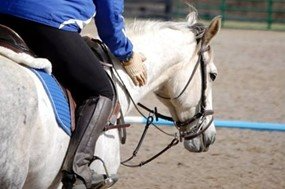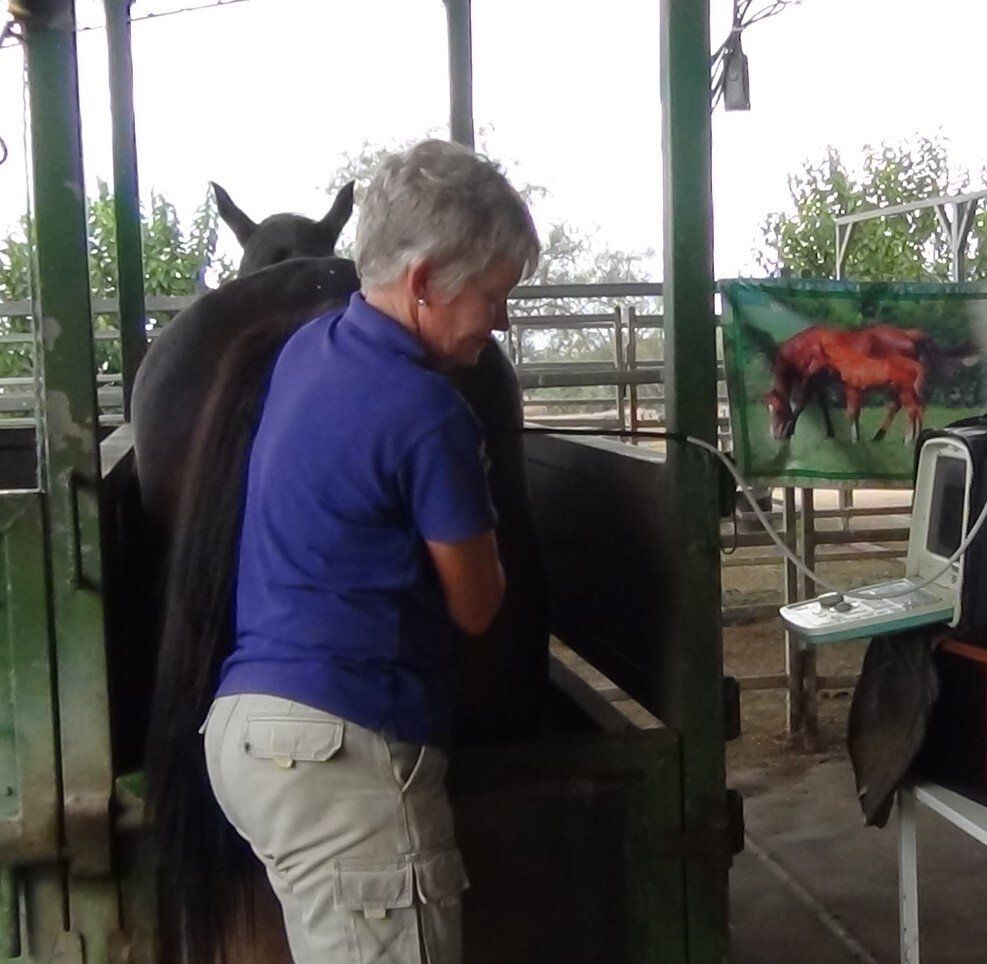Horse talk Articles
ALTERNATIVE THERAPIES - ALOE VERA
THE HISTORY OF SOME COMMONLY USED "ALTERNATIVE MEDICINES" - ALOE VERA
(Article by Dr. Charissa Francies Smith BVSc Dip Ac Acacia Animal Care; AVA Queensland News; December 2010.)
Aloe Vera (Aloe barbadensis, Aloe chinensis)
Aloe vera is a plant commonly used as a treatment for skin disease, and is a component of skin treatment formulas such as the shampoos released by Ken Mason in his Dermacare range in the late 1980's. Since then there have been a plethora of veterinary shampoos and gels using Aloe vera.
The commonly accepted first record of use was in a Sumerian clay tablet, found in the city of Nippur, inscribed around BC 2200. The first detailed discussion of Aloe's medicinal value is probably in an Egyptian document written BC 1550. This document gives twelve formulas for mixing Aloe wih other agents to treat both internal and external human disorders. Copra's Indigenous Drugs of India, 400 BC, showed it had widespread use "for external application to inflamed painful parts of the body and for purgation [internal cleansing]."
Dioscorides (41AD - 68 AD), master of Roman pharmacology, attributed to its juices "the power of binding, of inducing sleep." He noted as well that it "loosens the belly, cleansing the stomach." He further added that this "bitter" Aloe (the sap) was a treatment for boils; that it eased haemorrhoids, that it aided in healing bruises; that it was good for the tonsils, the gums, and all general mouth irritations; and that it worked as a medicine for the eyes." Dioscorides further observed that the whole leaf, when pulverised, could stop the bleeding of many wounds. This was the first comprehensive examination of its many uses to reach the western world.
Arabian physicians picked up the works of Dioscorides which were overlooked in medieval Europe apart from the works of the great feminist nun, Hildegtard von Bingen (1098-1179 AD). Its use was not common in Europe until the crusades (1096-1270 AD) when it is thought people people returning brought back the knowledge. In the middle ages Arabic herbalists were the forefront to western medicine especially in Iraq where some of the greatest practitioners existed, such as the Persian-born physician Avicenna (980-1037 AD). He is considered the inventor of distillation. Uses of Aloes in Arabia were recorded in texts reported to be now in the British Museum. At around the same time in China, Aloe vera was traditionally used as part of formulas as a bitter cold preparation for heated abdominal upsets and the dried juice of the leaf was the part used. This use was unlike the full leaf pulverising and laxative usage in our century. The text in which its use first appeared was "Materia Medica of the Jia You Era" by Zhang YU-Xi and Su Song in 1061. There was Arab migration to China at this time, so it is possible the use of Aloes travelled to China from Arabia.
In the 1800's in Australia, (family history by me) Aloe vera was planted near houses, and at the farm gate, and under the old gum tree as a treatment for parasites, a funny tummy, and the hot sweats, where the inside surface was cleaned from the leaf, a tea made from this and drunk. It was not commonly used for skin problems, as people only mashed up the whole leaf and in my opinion people were commonly overdosed, and too much of the inside of the leaf near the skin was used. My great-grandmother Francies (DOB 1860) used it as a threat to small children following the consumption of sweets. The 1905 British Veterinary Codex, from which students at University of Sydney were taught in 1968, describes several different types of aloe, credits it only with purgative properties, and defines its action as being only in the large intestine, it ignores all the soothing properties, and the differences between the inner and outer part of the plant.
In the post World War One era, herbalists increased in numbers and new authors espoused the use of Aloe vera, such as Mrs M Grieve in "A Modern Herbal" in 1931 where multiple uses and different species are described. In her book, "The Complete herbal handbook for Farm and Stable", Juliette de Bairacli Levi, 1952, used Aloe communis not vera, and refers to Arabic sources and multiple uses. Herbalists and alternative vets started to use Aloe barbadensis commonly as a gut immune system modifier, a skin treatment and cooling laxative and antiparasitic in the treatment of animals at this time.
The nest great step in the Australian veterinary use of Aloe vera comes in Wynn and Fougere's book "Veterinary Herbal Medicine p 464" published in 2007 (and subsequently reviewed by me in "The Veterinarian"). Here the multiple uses of Aloe vera were described in a format which made them easily available to all veterinarians, with scientific references. W and F describe the skin healing, the purgative action, immune modulating actions and actions of acemannan, a gut immune modulator commonly manufactured from Aloe vera. Its use as an anticancer and antiviral treatment is also described and is common among vets of the AHV. The side effects such as reduction in T3 and T4 levels (p 323), and interactions with other medicines is also described.
We are now more knowledgeable in the ways of plants, and know that an Aloe grown in China will have different properties to one grown in Gatton near the cow shed, and that plant will vary according to the season, and the soil. Judging from the texts, the Chinese variety is more cooling. We are aware that the juice has different properties from the heavy gel lining the leaf which is where the purgative and wound stimulating properties come. I keep a small leafed Aloe vera for making soothing gel for burns and allergic reactions, and a larger one for slow healing wounds and gut immunity. They both classify as Aloe vera, but are somewhat different in action!
Hurray for the humble Aloe!
Other Articles



